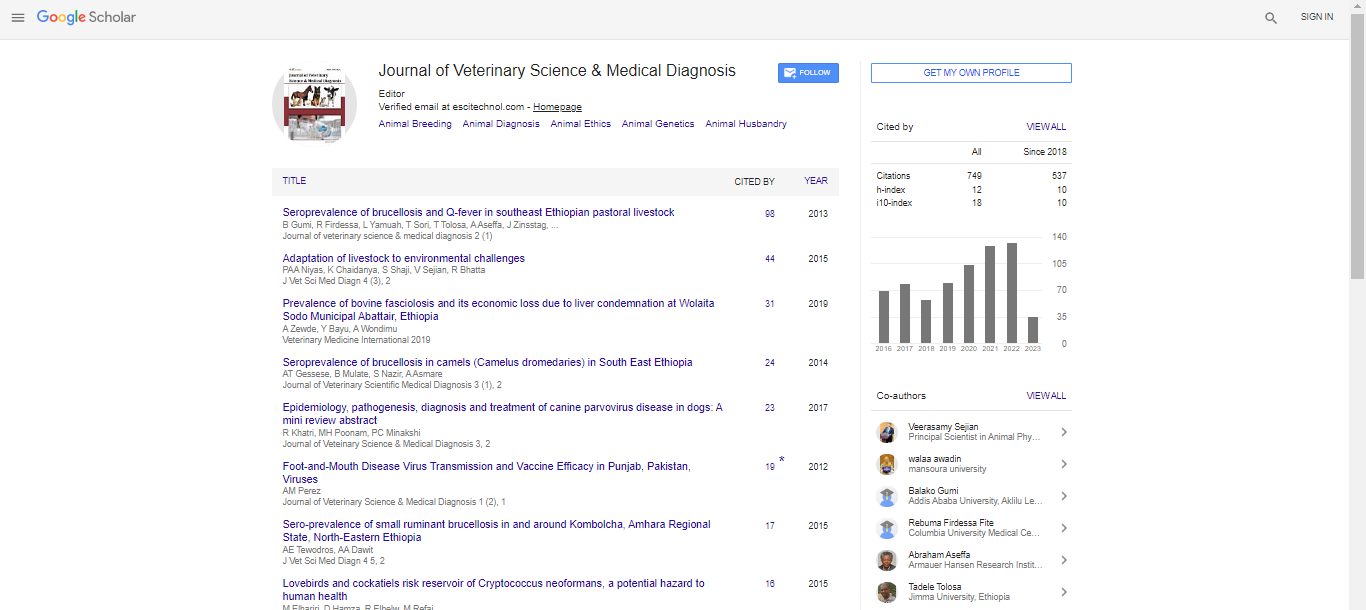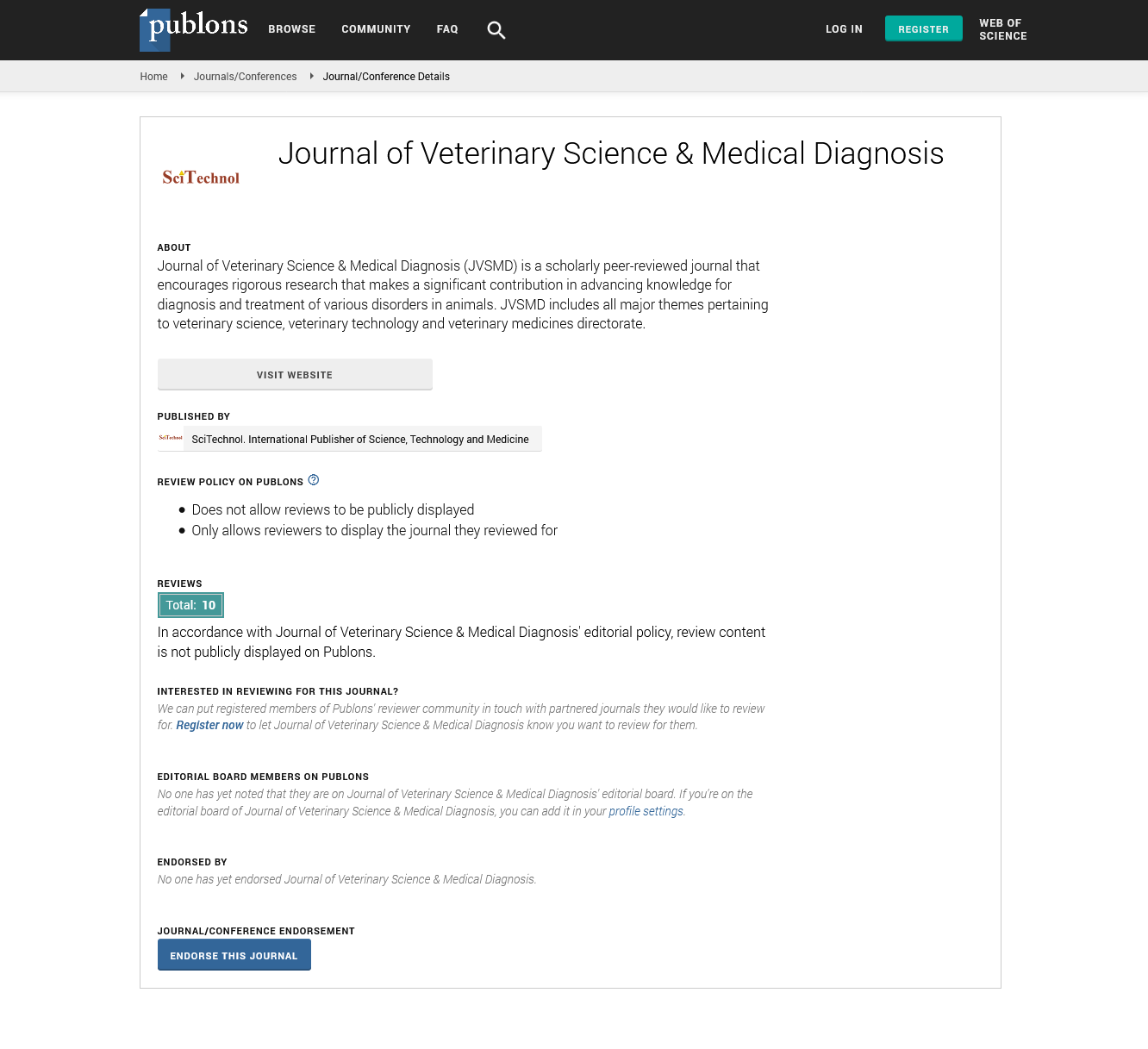Immune response and hemato-biochemical study in induced salmonellosis in chicken model
Mir Shabir Ahmad, N A Ganai, Safeer Alam, T A Sheikh, G G Sheikh, F A Wani, A A Dar
SKUAST-K University, India
: J Vet Sci Med Diagn
Abstract
The present study was aimed to understand the differential and tissue specific immune response of three chicken lines Vanraja, KCL and Broiler by investigating the expression kinetics of cytokines in liver, spleen and caecum in Salmonella typhimurium challenged birds. In addition, blood physiological and antibody response (IgG) was studied to investigate the disease severity. Differential expression of immune response genes like IL-12 and IL-18 following Salmonella typhimurium induced infection was studied in liver, spleen and caecum on different days post infection. Humoral immune response elicited was measured in terms of serum IgG levels. Salmonella induced pathophysiological changes were assessed using various haemato-biochemical parameters. Infection dose of 2x108 CFU/ml produced the symptoms characteristics of Salmonellosis in experimental birds. On postmortem examination, lesions like necrotic foci on liver, fibrinous exudate in the pericardial sac, congestion of intestines, inflamed caeca etc were noted. Immune response gene expression study revealed higher expression till 7th-9th day post infection followed by a steady decline till 15th day post infection. The overall gene expression was higher in broiler chicks compared to KCL and Vanraja. Tissue specific response showed greater expression in caecum followed by spleen and liver. Serum IgG concentrations showed a steady increase throughout the experimental study duration. Differential cellular responses revealed leukocytosis with relative heterophilia and initial lymphopenia followed by lymphocytosis. Infection induced haematological changes observed were decrease in RBC count, haemoglobin and packed cell volume. Biochemical changes observed were decrease in serum albumin and total proteins with increase in serum ALT, AST and glucose concentrations. The real-time mRNA gene expression results indicated that commercial broilers are more susceptible to infection compared to backyard chicks. The results were also validated by ELISA based studies on IgG antibody response. Investigations on haematological and biochemical parameters may aid in monitoring the patho-physiological changes in avian Salmonellosis. Also, there seems a potential scope for introgression of disease resistant genes of indigenous/ backyard birds to high yielding exotic germplasm.
Biography
E-mail: Shabir1982@gmail.com
 Spanish
Spanish  Chinese
Chinese  Russian
Russian  German
German  French
French  Japanese
Japanese  Portuguese
Portuguese  Hindi
Hindi 
